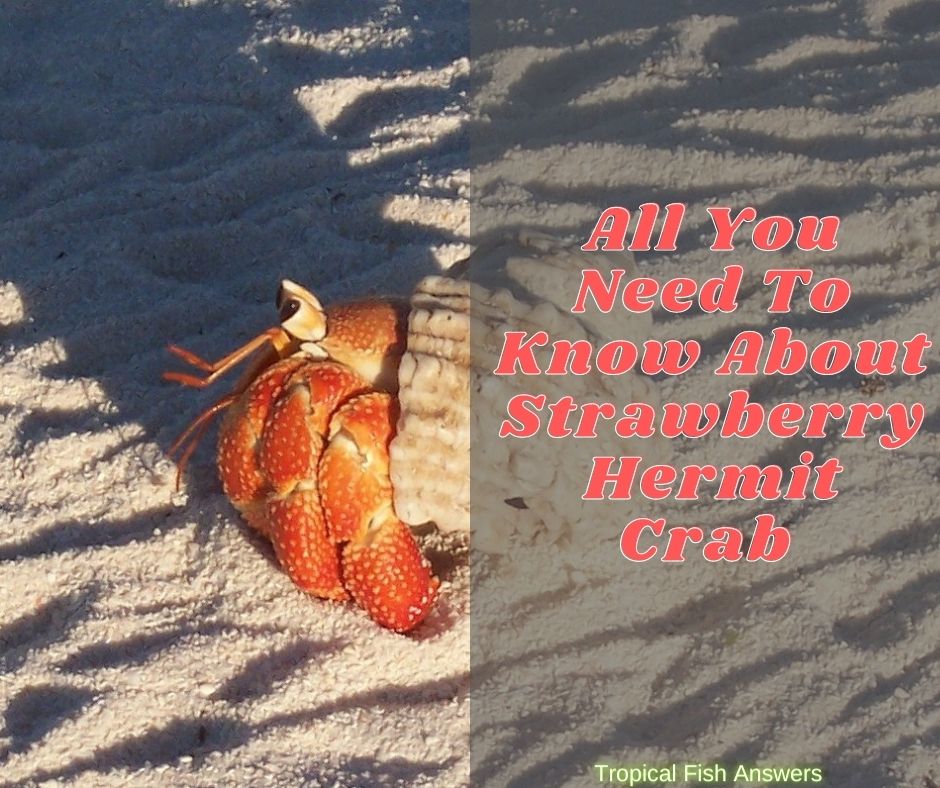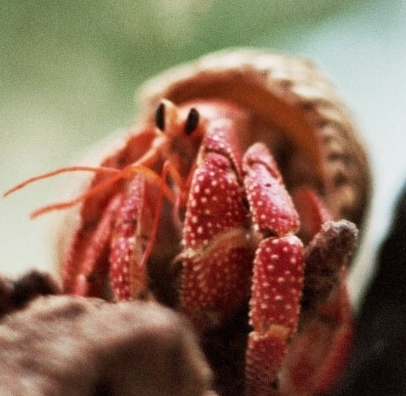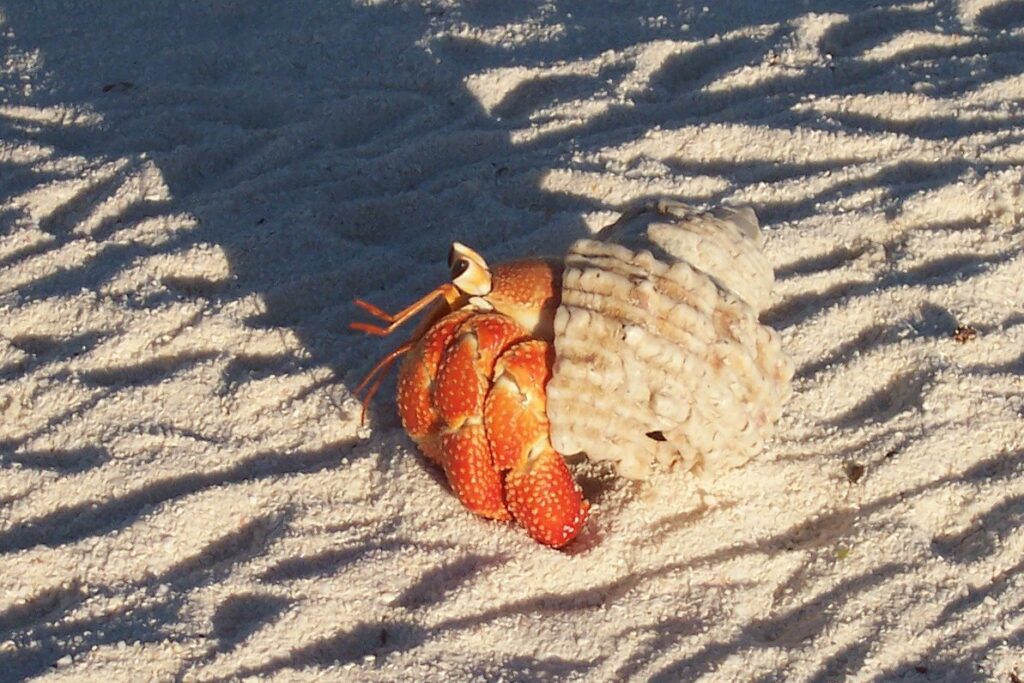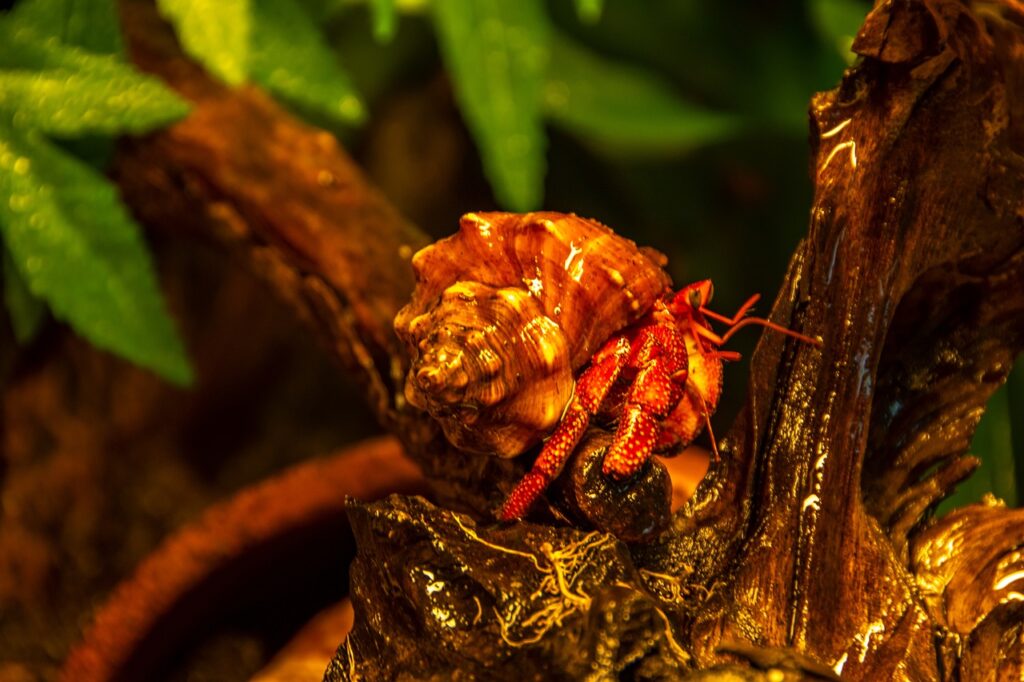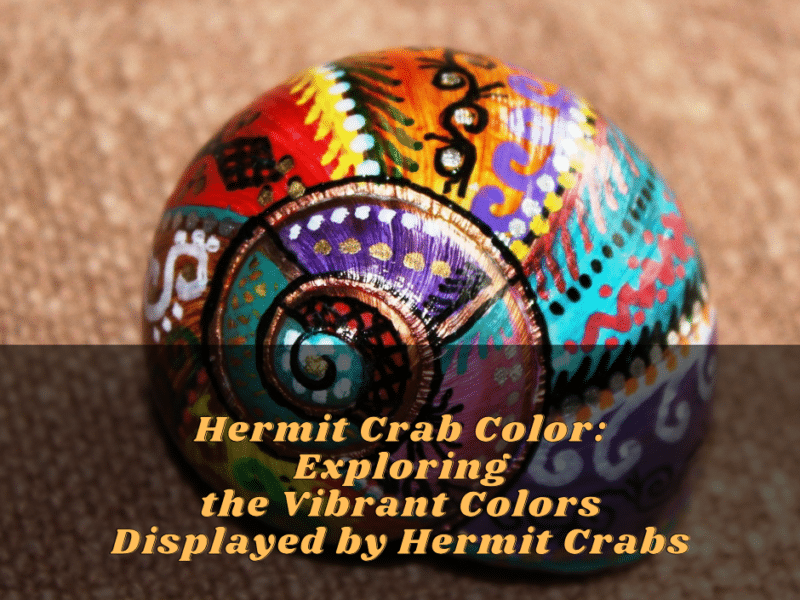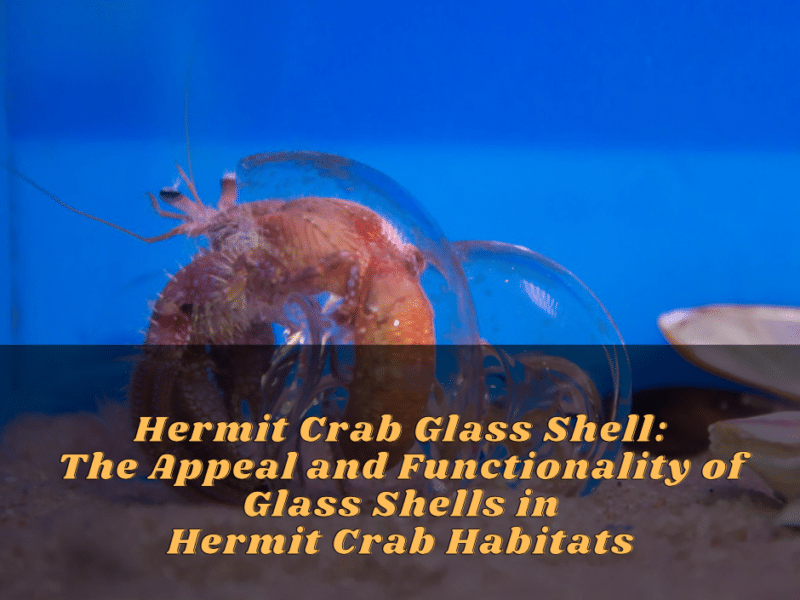|
Listen:
Getting your Trinity Audio player ready...
|
The strawberry hermit crab is a member of the Coenobitidae family, the same family as the coconut crab. The strawberry crab has a range of colors from orange to black and can be seen in various reds and bright reds.
It is very abundant in Tetiaroa and widespread in the rest of the world. Because it needs a regular seawater source for internal breathing and osmoregulation, it is found close to the coast. The shell that the crab uses to protect its soft abdomen is from marine gastropods. Its shell is used to protect important organs from shock or drying out.
At night, the strawberry and coconut crab is more active. It is around 80mm in length and can live for around 25 years in nature. Spermatophores are used to fertilize the eggs when a male deposits them on a female. When the tide goes up, the females deposit the eggs on a rock, where they will return to the lagoon.
Detritivores are capable of eating all that is organic so that they can eat wood or dead animals. A fun fact is that when a strawberry hermit crab finds a bigger shell, it gathers in a line from biggest to smallest. When it does, the rest of the line moves the same way.
What Does A Strawberry Land Hermit Crab Eat?
Like all other land-dwelling crustaceans, strawberry hermit land crab feeds primarily off of plants. They have been known to consume algae, seaweed, kelp, barnacles, mussels, oysters, clams, snails, worms, insects, fish, mollusks, and even small mammals such as mice. In addition, some species also prey upon each other.
For example, males may attack smaller individuals of their sex if there is no larger individual available. Some species of hermits are omnivorous; others are predatory. Omnivory means that an animal eats both plant material and meaty food items. Carnivory refers to feeding only on meat. A few species of hermit crabs are herbivorous, meaning that they mainly eat vegetation.
Herbivore hermit crabs include those which feed exclusively on green algae. These hermit crabs do not need to filter water through their gills because they obtain oxygen directly from photosynthesis by using chlorophyll pigments in their skin cells.
How Do You Take Care Of A Strawberry Hermit Crab?
It takes quite a bit of time and effort to maintain a healthy colony of hermit crabs properly. The first thing you want to do is provide plenty of space for them to move freely. Make sure that there isn’t anything else in the area where they might bump into something harmful. Next, ensure that the aquarium has enough room for them to swim around comfortably. Finally, keep the water clean and free of debris. Clean the aquarium regularly and remove dead organisms. Also, change the water every week.
How Large Do Strawberry Crabs Get?
On average, the crabs grow to be 3 inches in length. With time, strawberry hermit crabs can grow to be 6-7 inches across.
How Long Do Strawberry Crabs Stay Alive?
This crab can live a long time in the wild. It is not unusual for strawberry hermit crabs to reach 30 years of age or more. Even with the best care, they are more likely only to live a few years in captivity. The difficulty of replicating their preferred natural environments, including a constant source of readily available water, is most likely the reason for this.
Natural Habitat Strawberry Hermit Crab
The Tetiaroa atoll is home to large populations of strawberry hermit crabs. The coast close to saltwater is where these crabs can be found, as they need a constant source of saltwater to complete several processes. They retreat to the treeline and deeper into the forest to get a supply of freshwater. Many crabs are collected from Indonesia or Madagascar for aquariums.
Identification
The strawberry hermit crab is a fairly easy-to-spot crab species as it has deep red and sometimes orange colors. These crabs have small white spots on their shells that are similar to the seeds on strawberries. As they grow, they like to change shells, and a shell serves as a way for them to hold onto water and protect it from the elements in tropical settings where they can easily dry out.
The strawberry crabs don’t change their appearance very often. During this time, they must stay under the ground for a few months because they are vulnerable to predators.
Strawberry Hermit Crab Tank Requirements
Space and humidity regulation can make it difficult to care for strawberries hermit crabs. These crabs need to accommodate for their shell, so they can get to be big. It is recommended to have a tank of at least 30 inches (76.2 cm) long for a couple of strawberry hermits. Many people like to use a combination of Ecoearth products and play sand when playing with crabs, as they do best on a 3+ inch deep mixture of sand and soil.
The crabs prefer to retreat to the shaded coastlines and can usually be found up in trees. It is a good idea to give some natural vines and driftwood to your animals so they can explore.
Water Sources
Freshwater and saltwater are needed all the time by Strawberry hermit crabs. You will need huge saltwater and fresh water baths. The water conditioner is needed to remove chlorine and chloramine from the freshwater bath. If you want to prepare the salt water bath for a marine aquarium, you’ll have to buy aquarium marine salt and mix it on your own or get premixed saltwater. Between 1.020-1.028 is how much the water will need to have a salinity.
The freshwater and saltwater sources of strawberry hermit crabs can be found in inland and shore forests. It’s important to have this water for successful molting and for keeping their gills wet.
Temperature And Humidity Regulation
The aquarium should be heated to the temperature of 81- 86 F during the day. The temperature shouldn’t go under 80 F (26.7 C) at night. It is recommended to use a fully controllable basking light to create a sunny area for the hermits in the aquarium since they only venture into the direct sunlight for a few minutes every day. The crabs prefer humidity levels between 60-80%, which can be tested with a hygrometer. This may be worthwhile if you want to invest in a system of freshwater mists.
It would be best if you had a humid environment for your strawberry hermit crab to have success. If ideal conditions aren’t met, a dead crab could happen.
Strawberry Hermit Crab Behavior
It is difficult to keep the strawberry hermit crab because of its daily migration from the shoreline to the treeline. The hermit crabs like to climb trees and eat young leaves in groups for easy food on the beach in the wild. To grow, the strawberry hermit crab undergoes a molt a couple of times a year. During this time, they can burrow into the substrate for a significant amount of time. Even when you don’t have any crabs, your crab may still bury its head in the sand.
When the time comes for a crab to change its shell, the smaller crab will form a line to take the larger crab’s shell. Extra shells should always be available in the aquarium setting so that the hermit can change when it is ready.
Strawberry Hermit Crab Diet
The bright red color of the crabs comes from their diet. The strawberry hermits are omnivores, meaning they eat a lot of different types of plants and animals. They rely on both plant- and animal-based foods to meet their needs. Crabs like seaweed, washed-up fish, mollusks, and other plants move between the coastline and forested areas.
Your land hermits will appreciate the variety you give them in the aquarium. Vegetables and shrimp are foods with high levels of carotene. Your hermit may be offered other greens to keep it interested in eating and mealworms to preserve its bright red color. It is recommended that you have a high-quality pellet on hand.
The strawberry hermit crab will start to lose its color if it doesn’t get enough carotene. The grey and white color of this species are since they don’t get enough carotene.
FAQS
Can Strawberry Hermit Crabs Eat Strawberries?
Yes, although they prefer fresh fruit over frozen or canned ones. The reason why they don’t enjoy eating them raw is that they can be too acidic. When eaten uncooked, strawberries contain citric acid, which causes stomach upset. It’s best to cook your berries first so that they won’t cause problems.
Can Hermit Crabs Drink Strawberry Juice?
No, it wouldn’t taste very good. Strawberries are high in sugar content and therefore make a great source of energy for hermit crabs. But they aren’t meant to drink juice. Instead, they should be fed whole fruits.
What Does A Strawberry Hermit Crab Look Like?
A strawberry hermit crab has an orange body covered by a dark brown shell. Its legs are long and slender, while its claws are large and sharp. This crustacean also has two pairs of antennae at the front end of its face.
What Kind Of Water Should A Hermit Crab Have?
Hermit crabs need clean, clear water. If algae are growing in the tank, then the crabs will not thrive well. Also, avoid adding saltwater as it could harm the crabs’ gills.
Conclusion
If you want to buy one, I recommend buying a pair of adult male and female crabs. These crabs do better together than alone. A single individual might become lonely and depressed after being separated from his mate.
Read more:
